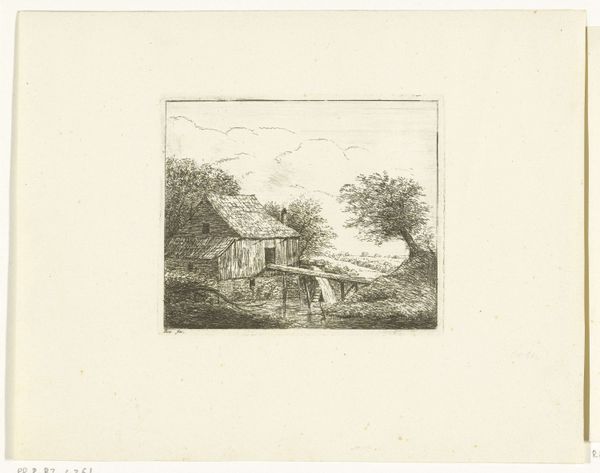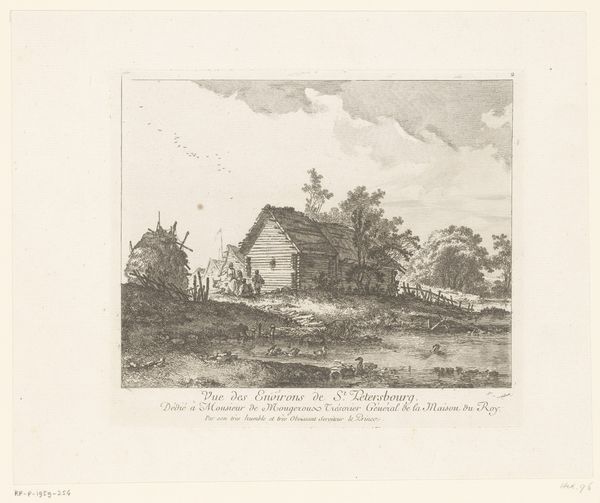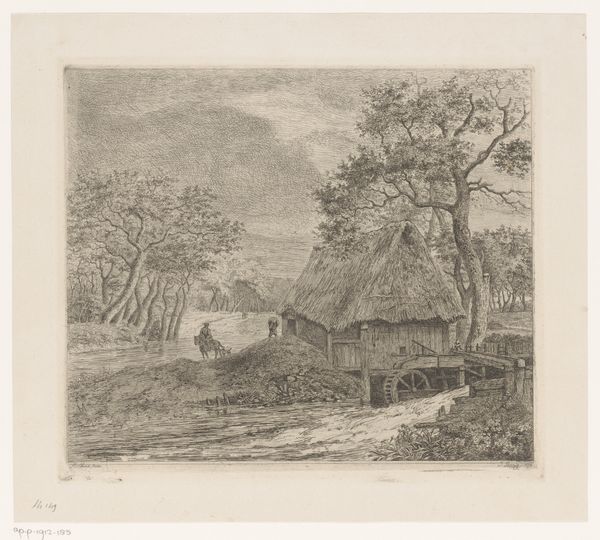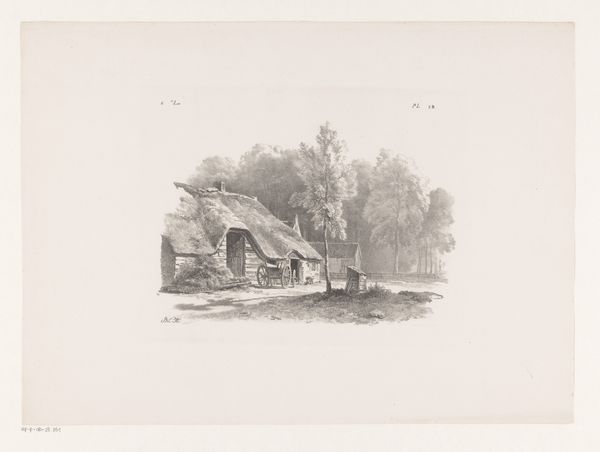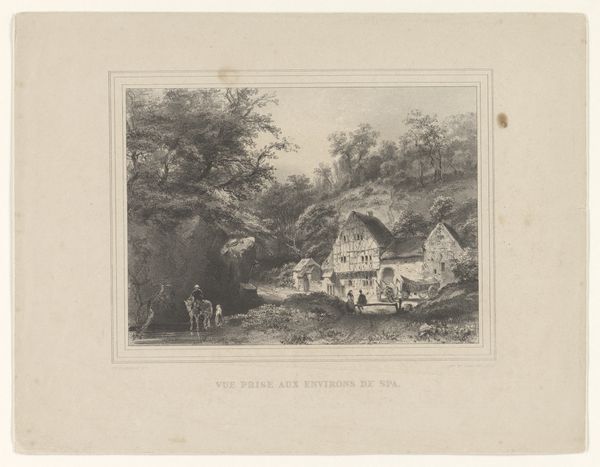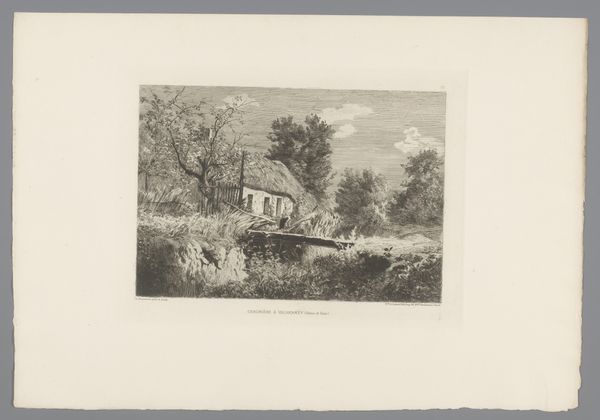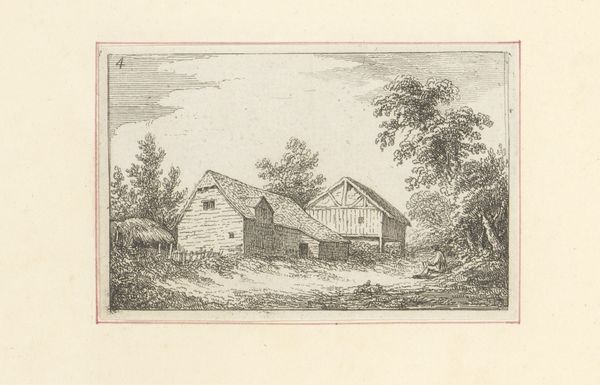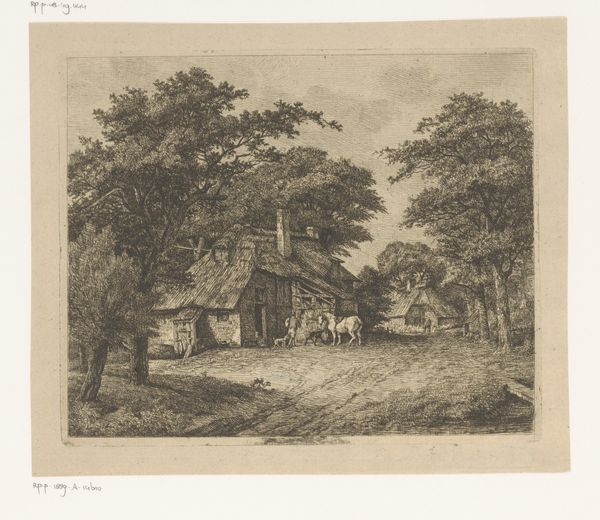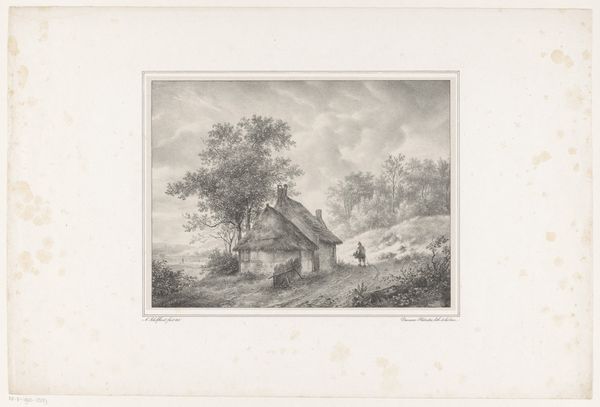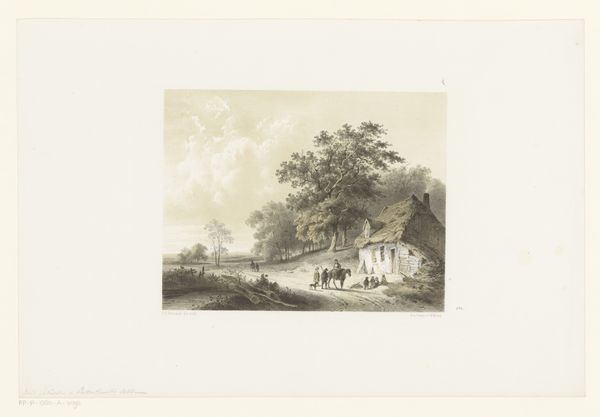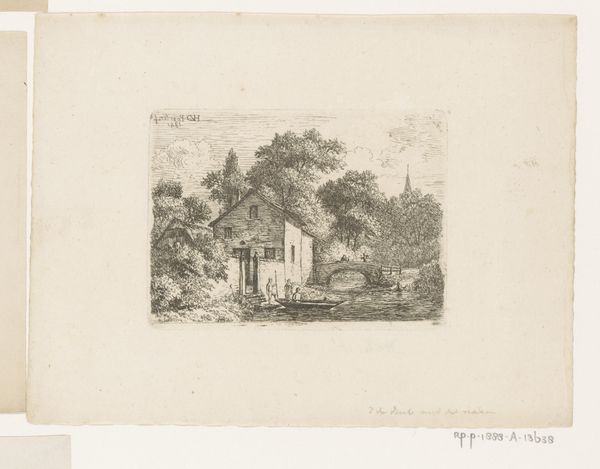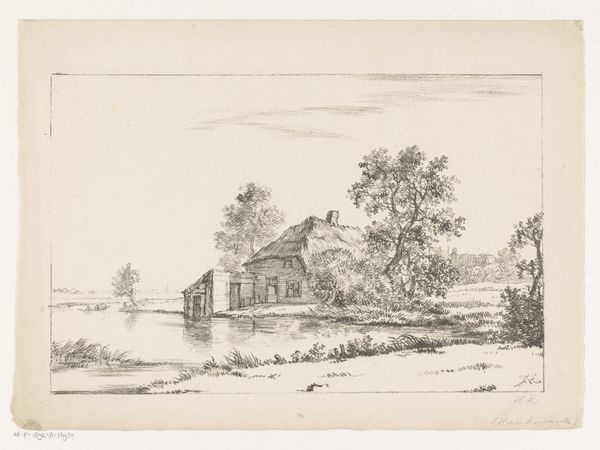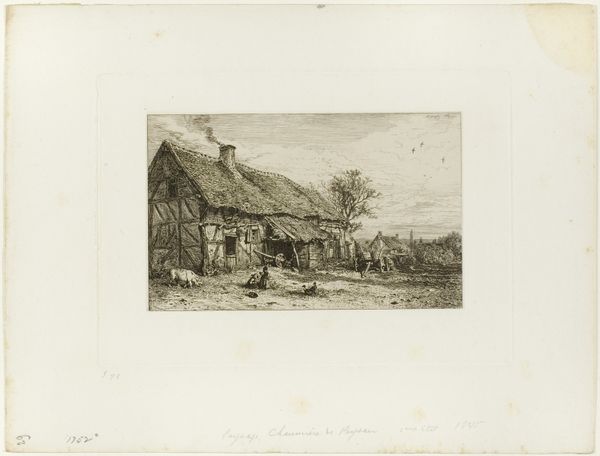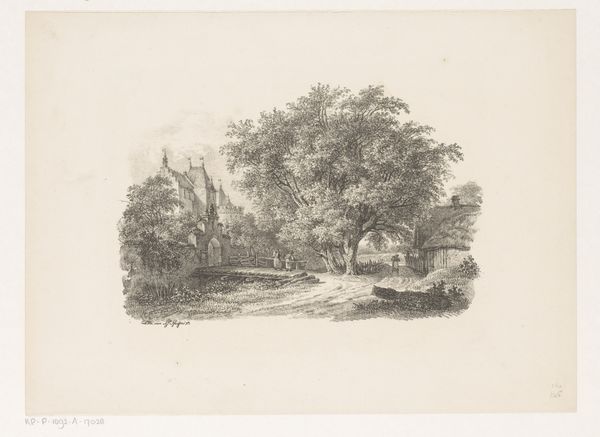
drawing, print, etching, paper, ink
#
drawing
# print
#
etching
#
landscape
#
paper
#
ink
#
romanticism
#
cityscape
#
genre-painting
Dimensions: height 265 mm, width 363 mm
Copyright: Rijks Museum: Open Domain
Editor: Here we have François Joseph Pfeiffer’s "Boerderij," created sometime between 1809 and 1835. It’s a small print, rendered in etching, ink, and paper. I’m struck by the density of the mark-making and the implied textures. What do you see in this piece? Curator: I'm immediately drawn to the process. The artist painstakingly creates an image evoking the idealized rural through repetitive mark-making. Notice the texture of the thatch, built up dot by dot. How does the *reproduction* process via etching relate to our understanding of "original" art, and the labor embedded in its creation? Editor: That's fascinating! I hadn't considered the labor involved in the etching process itself. It feels at odds with the romanticized image of the idyllic countryside. Curator: Precisely. Consider also the material realities: paper, ink, and the tools used to create the etching plate. This piece allows for a more democratic consumption of art than an oil painting might, right? Do you think the relative accessibility of prints alters its reception in comparison to "fine art?" Editor: It must have. A wider audience means wider appeal… perhaps to the rising middle class of the time. Curator: Exactly! So, are we really looking at an objective landscape, or an aspirational scene manufactured through the material process of printmaking to suit consumer tastes? Editor: This has really shifted my perspective on this piece. I now see it as less about representing reality, and more about a product of its time. Curator: Indeed. Examining the means of production opens a new level of interpretation beyond subject matter alone.
Comments
No comments
Be the first to comment and join the conversation on the ultimate creative platform.
